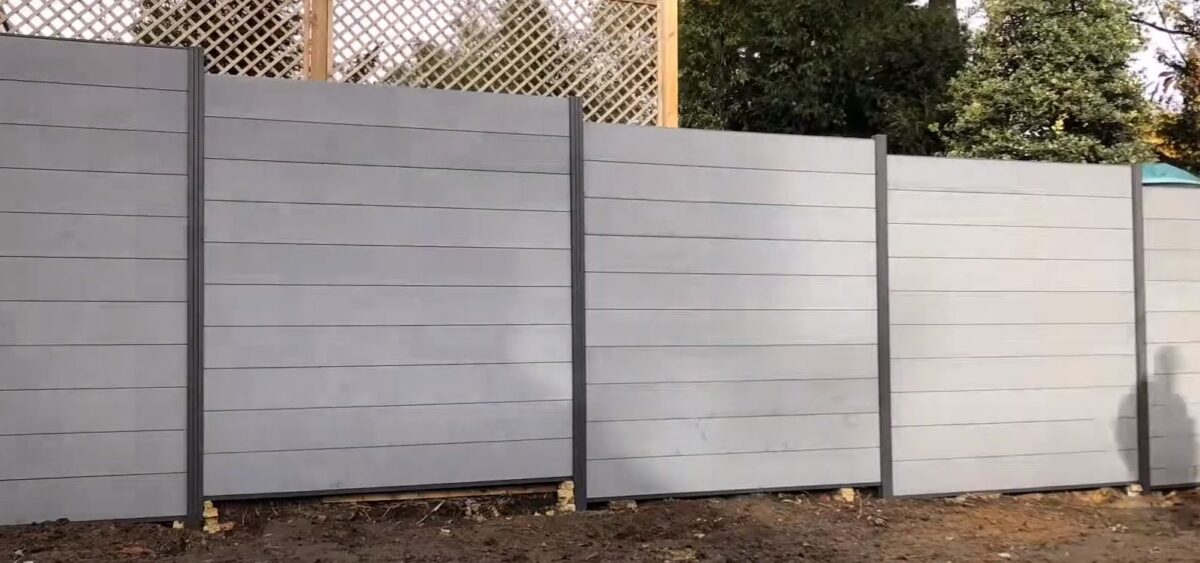Pre-Painting Treatment For Fencing
Treating your fence before painting is crucial for ensuring the longevity and aesthetic appeal of the paint job. Proper preparation helps the paint adhere better and protects the wood from various elements.
Importance of Treating Your Fence
Treating your fence before painting provides several benefits:
- Improved Paint Adhesion: Treatment helps paint adhere better to the wood, preventing peeling and cracking.
- Protection from Elements: Treatments can protect the wood from moisture, UV rays, and pests.
- Extended Lifespan: Proper treatment and painting can significantly extend the lifespan of your fence by preventing rot and decay.
Steps to Treat a Fence Before Painting
Clean the Fence
-
- Remove Dirt and Debris: Use a stiff-bristle brush to remove loose dirt and debris.
- Wash the Fence: Use a power washer or a garden hose with a high-pressure nozzle to clean the fence thoroughly.
- Dry the Fence: Allow the fence to dry completely before applying any treatment or paint.
Inspect and Repair
-
- Check for Damage: Inspect the fence for any signs of damage, such as cracks, rot, or loose boards.
- Make Necessary Repairs: Replace or repair damaged sections to ensure a solid surface for painting.
Apply a Wood Preservative
-
- Choose the Right Preservative: Select a wood preservative that protects against moisture, rot, and insects.
- Apply Evenly: Use a brush or sprayer to apply the preservative evenly across the entire fence.
- Allow to Dry: Let the preservative dry completely according to the manufacturer’s instructions before painting.
Types of Fences and Their Treatment Needs
Wooden Fences
Wooden fences are the most common and require thorough preparation before painting.
-
- Cedar Fences:
- Treatment Needs: Cedar is naturally resistant to rot and insects but benefits from a sealant to protect its colour and enhance durability.
- Painting Tips: Use a high-quality exterior paint and apply a primer first.
- Pine Fences:
- Treatment Needs: Pine needs a preservative to protect against moisture and pests.
- Painting Tips: Apply a primer and at least two coats of exterior paint.
- Redwood Fences:
- Treatment Needs: Redwood is durable but can benefit from a sealant to protect its rich colour.
- Painting Tips: Use a primer and exterior paint designed for wood.
- Cedar Fences:
Vinyl Fences
Vinyl fences do not require traditional treatments but can be painted if desired.
-
- Preparation: Clean thoroughly to remove dirt and mildew.
- Painting Tips: Use a vinyl-specific paint for the best results.
Metal Fences
Metal fences need to be treated to prevent rust before painting.
-
- Preparation: Clean the metal and remove any rust with a wire brush.
- Treatment Needs: Apply a rust-inhibiting primer before painting.
- Painting Tips: Use a paint designed for metal surfaces.
Composite Fences
Composite fences are low-maintenance and usually do not require painting, but can be painted if needed.
-
- Preparation: Clean the surface thoroughly.
- Painting Tips: Use a paint designed for composite materials.
Health and Safety Considerations
When treating and painting your fence, always prioritize health and safety:
- Wear Protective Gear: Gloves, safety glasses, and masks to protect against fumes and debris.
- Work in a Well-Ventilated Area: Ensure proper ventilation to avoid inhaling harmful chemicals.
- Follow Manufacturer Instructions: Use products according to their guidelines for safe and effective results.
Local Considerations in Auckland
Auckland’s climate can impact the treatment and painting of fences. For instance:
- Murrays Bay: Coastal conditions can expose fences to salty air, necessitating extra protection against corrosion and decay.
- Hillsborough: Urban environment with varying weather conditions requires durable treatments to withstand both wet and dry spells.
- Grey Lynn: The vibrant, inner-city suburb with higher pollution levels requires robust treatments to protect against environmental wear and tear.
- Papakura: Suburban and semi-rural areas face varying moisture levels, making it essential to use treatments that guard against rot and mildew.
- Mount Eden: Known for its volcanic soil, fences here might need extra reinforcement and protection from ground moisture.
- Albany: Rapidly growing urban area with new developments that require modern, low-maintenance fencing solutions to match contemporary homes.
Fence Treatment Needs Table
| Fence Type | Treatment Needs | Painting Tips | Maintenance Needs | Ideal Scenarios |
| Wooden Fences | Preservative, sealant | Primer, high-quality exterior paint | Regular inspection, re-painting | Residential, aesthetic appeal |
| Vinyl Fences | Thorough cleaning | Vinyl-specific paint | Low maintenance, occasional cleaning | Modern, low-maintenance properties |
| Metal Fences | Rust-inhibiting primer | Metal-specific paint | Regular rust inspection | High-security, durability |
| Composite Fences | Thorough cleaning | Composite-specific paint | Low maintenance | Eco-friendly, durability |
Technical Insights on Fence Treatment and Painting
Science of Wood Treatment
Moisture Protection:
- Sealants: Create a barrier that prevents water from penetrating the wood, reducing the risk of rot.
- Preservatives: Protect the wood from fungal decay and insect damage.
UV Protection:
- UV-Resistant Coatings: Protect the wood from the harmful effects of sunlight, preventing discolouration and weakening.
Paint Adhesion
Primers:
-
- Function: Primers provide a stable base for the paint, improving adhesion and durability.
- Application: Apply evenly and allow to dry completely before adding paint layers.
Maintenance Tips
- Regular Inspections: Check the fence regularly for signs of damage or wear.
- Reapply Treatments: Depending on the environment, reapply treatments every few years to maintain protection.
- Cleaning: Keep the fence clean to prevent dirt and debris from damaging the surface.
Properly treating your fence before painting is essential for achieving a durable, attractive finish that can withstand Auckland’s diverse climate. By understanding the specific needs of your fence type and following the right preparation steps, you can ensure long-lasting protection and aesthetic appeal. For professional fence installation advice and assistance with your fencing project, consider engaging Quality Fencing Auckland.
Other Locations:


